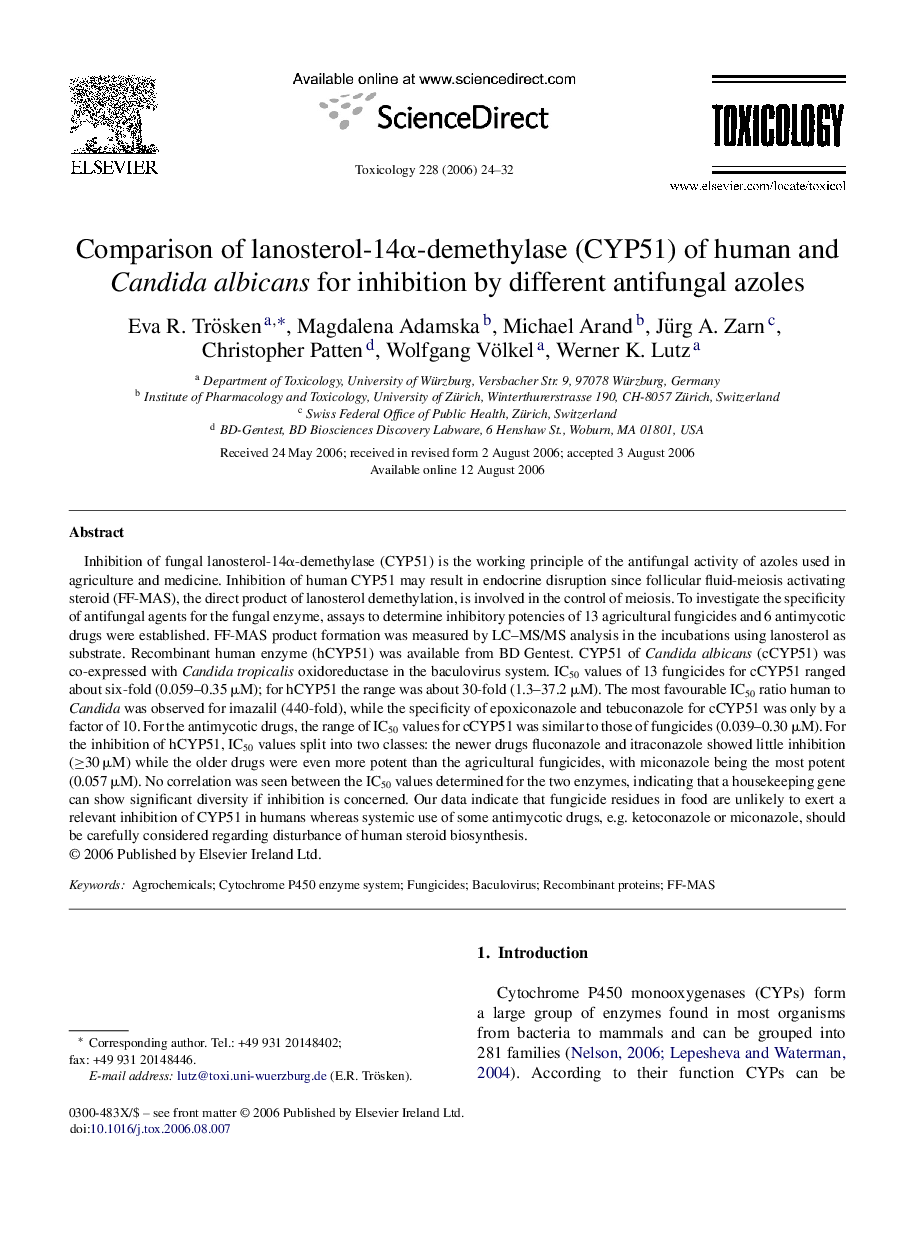| Article ID | Journal | Published Year | Pages | File Type |
|---|---|---|---|---|
| 2597682 | Toxicology | 2006 | 9 Pages |
Inhibition of fungal lanosterol-14α-demethylase (CYP51) is the working principle of the antifungal activity of azoles used in agriculture and medicine. Inhibition of human CYP51 may result in endocrine disruption since follicular fluid-meiosis activating steroid (FF-MAS), the direct product of lanosterol demethylation, is involved in the control of meiosis. To investigate the specificity of antifungal agents for the fungal enzyme, assays to determine inhibitory potencies of 13 agricultural fungicides and 6 antimycotic drugs were established. FF-MAS product formation was measured by LC–MS/MS analysis in the incubations using lanosterol as substrate. Recombinant human enzyme (hCYP51) was available from BD Gentest. CYP51 of Candida albicans (cCYP51) was co-expressed with Candida tropicalis oxidoreductase in the baculovirus system. IC50 values of 13 fungicides for cCYP51 ranged about six-fold (0.059–0.35 μM); for hCYP51 the range was about 30-fold (1.3–37.2 μM). The most favourable IC50 ratio human to Candida was observed for imazalil (440-fold), while the specificity of epoxiconazole and tebuconazole for cCYP51 was only by a factor of 10. For the antimycotic drugs, the range of IC50 values for cCYP51 was similar to those of fungicides (0.039–0.30 μM). For the inhibition of hCYP51, IC50 values split into two classes: the newer drugs fluconazole and itraconazole showed little inhibition (≥30 μM) while the older drugs were even more potent than the agricultural fungicides, with miconazole being the most potent (0.057 μM). No correlation was seen between the IC50 values determined for the two enzymes, indicating that a housekeeping gene can show significant diversity if inhibition is concerned. Our data indicate that fungicide residues in food are unlikely to exert a relevant inhibition of CYP51 in humans whereas systemic use of some antimycotic drugs, e.g. ketoconazole or miconazole, should be carefully considered regarding disturbance of human steroid biosynthesis.
